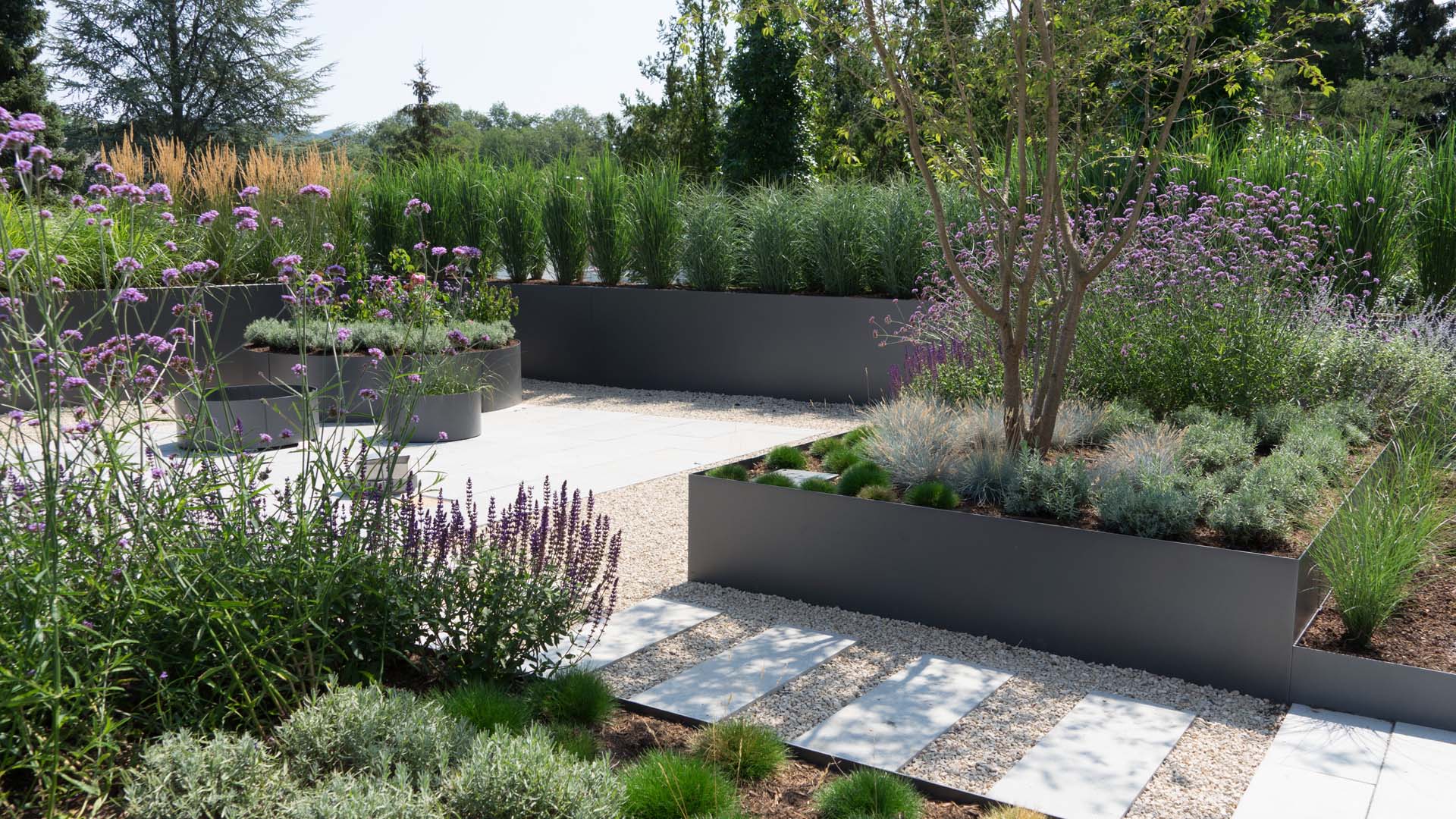

Love your garden, but don’t have enough time to look after it? We’ve got many ideas to reduce your work load.
Almost all of us would love to spend more time relaxing outside rather than working in it. Yet having a garden can take up a lot of our time with maintaining borders, weeding, cutting the grass, trimming hedges, etc. Time that probably most of us can’t spare in our busy lives.
Facing a flower bed full of perennial weeds and the endless watering of plants in containers can be enough to dampen the spirit of even the most enthusiastic of gardeners.
However, it is possible to have a lovely garden and not have to spend all that time maintaining it. And no, the answer isn’t hiring a gardener, although that is an option if you have the money.
The solution lies in our low-maintenance garden ideas, and to use techniques that make gardening more efficient and effective. No longer will you be spending your weekend pulling up weeds and fixing the mower.
Low-maintenance gardens are also important for people with reduced mobility. You may love your large lawn, but if traversing it – not to mention mowing it – is becoming more difficult, some level of hard landscaping may be the order of the day. We’ve got 14 top tips to give you back some time so that you can spend it relaxing in the garden, instead of slaving away in it.
They also take the backache out of gardening

If you grow all your plants in raised beds, gardening becomes so much easier. You will no longer need to be constantly stretching to the ground in order to pull up a weed or sow a seed.
In fact, if you make your If you grow all your plants in raised beds, gardening becomes so much easier. You will no longer need to be constantly stretching to the ground in order to pull up a weed or sow a seed.
In fact, if you make your raised bed from thick logs or timbers, you can even perch on the side, and weed with one hand and sip your cup of tea with the other. Never has weeding been so easy. It’s the perfect low-maintenance solution to gardening.
If the thought of making a raised bed from scratch sounds like too much work initially, there are lots of easy-to-build kits available. from thick logs or timbers, you can even perch on the side, and weed with one hand and sip your cup of tea with the other. Never has weeding been so easy. It’s the perfect low-maintenance solution to gardening.
If the thought of making a raised bed from scratch sounds like too much work initially, there are lots of easy-to-build kits available.
Decent tools will save you hours of work
The old gardening adage about “having the right tool for the right job" is important when it comes to reducing your workload in the garden. There are so many handy gadgets that make gardening easier. This improves your efficiency and reduces the time needed to maintain the garden.
In my gardening armoury, I have several tools to make light work of heavy gardening tasks. I’ve got a pair of long-handled leaf -collectors, meaning I can collect up my leaves easily without having to bend down to the ground.
I have a gadget that levers out long dandelion roots without them breaking, saving me from having to dig them up. I also have a hose on a reel that recoils itself when I’ve finished, which makes watering so much quicker and easier.
Good, quality machinery can also help. For example, a self-propelled mower or hoover mower can be a lot easier than one you have to push. And leaf blowers will clear up fallen leaves in next to no time. This leaf blower can even be moved around on wheels, taking the strain off the user.
Save on back-breaking work

Digging can be hard, physical graft. But you don’t need to dig if you want to grow vegetables or create beautiful borders. Many gardeners now practise no-dig, whereby they cover the soil with compost, organic material and cardboard, instead of digging into it. This is partly because they believe it produces bigger crops, but also because it involves less work.
RHS Chelsea Flower Show gold-medal-winning garden designer Joe Perkins believes that not only is no-dig good horticultural practice, but it is lower maintenance. “No-dig can help with reducing your workload in the garden,” he says. “I would suggest you don’t spend time digging over the garden.
“The no-dig approach is a great way to reduce the amount of maintenance needed. Another benefit is your plants will be better for it. Basically, you are massacring the soil by digging into it. It destroys the environment for all those invertebrates and micro-organisms living there. Every time we take a fork to the border, we ruin the natural eco-system, which is so important for healthy plant growth.”
So, perhaps consider a no-dig approach to gardening, if you wish to have a low-maintenance garden.
Choosing the wrong plants can lead to more work than is necessary in the garden. Perkins has the following advice: "Before planting a garden, engage a plant designer or at least a person who has good plant knowledge. They can ensure you have plants that will work well in your garden. “They will help you choose a combination of plants that will co-habit with each other and grow well together,” he adds.
“If you introduce thuggish or invasive plants, they will dominate and smother each other. And this will make more work for you in the garden. “A low-maintenance garden will be much easier to manage if you observe nature and work with it, not against it.”
Perkins explains we can learn a lot from studying nature. By emulating plant combinations in the wild, we can recreate something similar at home and this will help with reducing the workload. As he explains: “For example, if you study many of the Mediterranean plants in their natural habitats, such as on rocky, mountain sides, you will observe they often grow in isolation or at least not surrounded by lots of other plants.
“If you were to put them into an herbaceous border scenario, surrounded by lots of other plants, they will struggle and the maintenance of keeping them all in check will increase.”
Use hard landscaping materials to avoid having to edge them
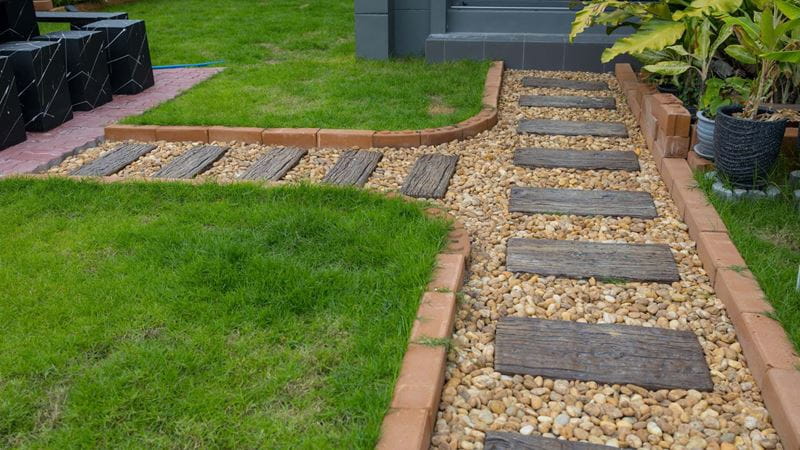
Perkins says: “If you have lawns and borders, ensure you use quality edging materials placed up against the sides. Otherwise grass ingresses into the soil and you end up losing the shape and structure of the design.
By having a decent border constructed from material, such as timber, steel or brick you will save time by not having to constantly get out the edging shears to keep a neat edge.”
Mowing a lawn can take up a considerable amount of your time in the garden. In addition, if you want it to look good you need to regularly water, feed, scarify and aerate it.
Instead, you could create a wildflower meadow, or just leave the grass longer to encourage wildlife into your outside space. This will not only save you time but is better for the environment, too.
Alison Marshall, head gardener at Torre Abbey in Devon, suggests the following: “If you have a lawn, simply let the grass grow long, as it is good for wildlife. Just mow a few paths through it every couple of weeks. You could mow around the edges too, just to keep it tidy and prevent it encroaching on other areas of the garden.”
This will save you having to physically cut the grass

For those of you that persist on having a perfect -looking lawn, there are other options for those craving low-maintenance garden ideas. For example, a robotic mower can be programmed to do the mowing for you.
Gerald Abrahams, director of GA Landscapes says: “Not only will robotic mowers save you time once you’ve set them up, but I’m really impressed with the quality of their finish, too. Although robotic mowers will not give you lawn stripes, the cut is still first class. If you combine it with a good automatic watering system, your lawn will look great throughout summer, without you having to push a mower around.”
To set up a robotic mower, you need to set up guidance wires around the area you want cutting. You then just need to program it. Once the initial setting up is done, the lawn is simply cut for you at the flick of a switch. What could be more low maintenance?
Torre Abbey’s Marshall has the following suggestion: “Visit local municipal or council parks. They will often plant shrubs that are low maintenance, mainly because their teams of gardeners simply don’t have the time to constantly be looking after them.
“Around my area I see that they use lots of slow-growing evergreen shrubs, such as pittosporum, hebe, rosemary and dwarf conifers. I also notice they use phormium a lot, which is a useful, colourful and architectural plant that requires very little maintenance.”
Watering can take up a lot of your time. If you have a few containers or hanging baskets, they can require watering up to twice a day on hot days in the summer.
Automatic irrigation systems are easy to set up and will do all the watering for you. They will save you hours of work through the summer.
There are a few different types of irrigation, but one of the easiest to install is a system of porous hoses that slowly seep out water from their rubber skin. Simply lay the hose across the surface of the soil or compost near the base of the plants. Then attach the end of the hose to a timer fixed onto the outside tap. You can then set the timer to switch on and off as often as you require.
Note that not all kits come with timers, so you may need to purchase them separately. Some can also be connected to a water butt. Do check you don’t have a hose pipe ban in your area before purchasing a system.
Avoid having bare soil in your beds
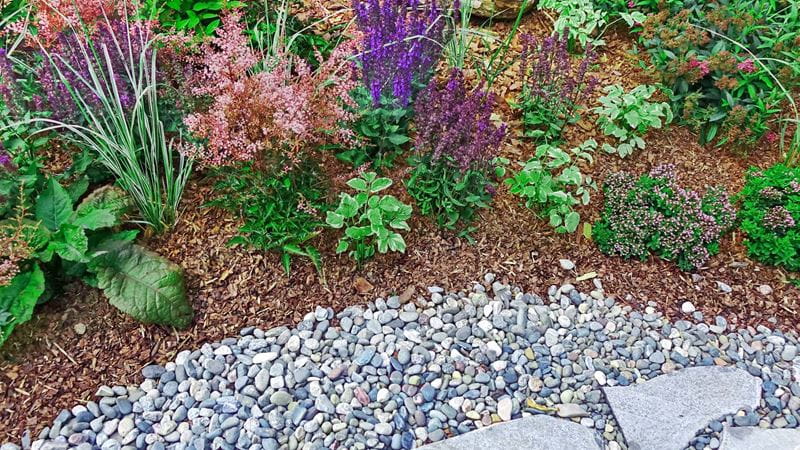
Areas with bare soil become a magnet for weed seeds. If a flower bed or border is empty, weeds will quickly spread into it. And this will increase the time you need to spend in the garden pulling them out.
The best solution is to fill these gaps with plants, but if this isn’t possible, then the next best option is to cover the soil over with a mulch. An organic-based mulch, such as wood chip or garden compost, is usually the best. Alternatively, you can use sheets of cardboard or purchase a weed-suppressing membrane.
If you create a neat, formal or symmetrical garden with perfect lines and contours, you could be making a rod for you own back. It could end up being a lot of work to keep it looking that way.
GA Landscapes’ Abrahams explains: “Imperfections in a ‘perfect’ garden stand out immediately. It's hard work trying to keep it looking pristine. For example, as soon as leaves drop onto your clean, white porcelain garden tiles you will need to tidy them away. Conversely, if you have a perfectly clipped, formal and straight hedge, you will need to constantly trim it to keep it that way.
“It’s far easier to have a relaxed approach to your garden. Go for an informal or rustic look. Perhaps create a cottage-style garden, where you won’t notice if the hedge hasn’t been trimmed or the grass hasn’t been cut. Then you don’t need to be constantly fussing over it.”
No need to turn compost with a fork
If you are serious about growing lots of plants, then a good compost heap is essential. This is because firstly, you can recycle lots of your waste material, such as grass clippings, kitchen fruit and veg scraps, and all your herbaceous material from the borders. And secondly, it is much more sustainable and environmentally friendly to produce your own compost instead of buying it from the garden centre in plastic bags.
Maintaining a compost heap can be hard work, though. You need to turn the compost regularly with a fork for the organic material to aerate and therefore decompose. However, a solution is at hand – rotating compost bins! By simply turning the handle the compost is turned over for you, giving you more time to relax and enjoy the garden. Making compost has never been so easy.
Julie Brandreth, director of Gardening Naturally, says: “Rotating composters are ideal for low-maintenance gardens as you don’t have to spend all that time turning the compost over with a fork. Instead, you just need to spin the composting drums occasionally. Not only does it save time, but it’s easier on your back and arms.”
Ditch petrol-based tools and get tooled up with battery- operated ones. Not only is it better for the environment, but they require far less time and maintenance.
Abrahams says: “Battery-powered equipment makes maintaining your garden so much easier. You do not have to worry about filling up tanks with fuel, or plugging in cables if you use electrical tools. With battery-powered tools you simply switch the machine on, and away you go.
“Battery-powered tools are also much easier to maintain. With petrol equipment, for example, you have to maintain spark plugs, clean filters, etc. There’s none of that maintenance with battery-powered versions.”
Plan before planting
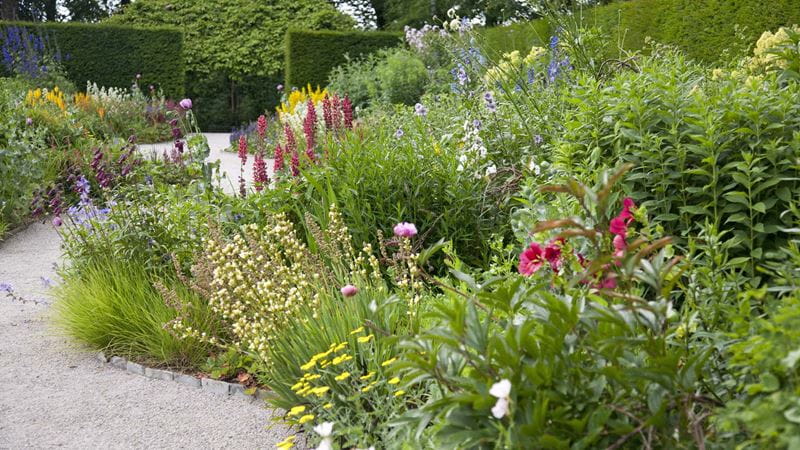
Marshall says: “Don’t make the mistake of buying something at the garden centre on impulse, just because it looks good. So many people make the mistake of seeing something they like and purchase it without understanding how fast-growing it is, or how big it will get. Do your research before buying anything. Do your planning before planting.
“Work out an entire border and design it whilst considering other plants that it will be growing among. Otherwise, it could be invasive and take over your entire border. A low-maintenance garden needs to be worked out in detail before you put a spade into the ground.”

Love your garden, but don’t have enough time to look after it? We’ve got many ideas to reduce your work load.

Our best trees for small gardens offer character and colour.
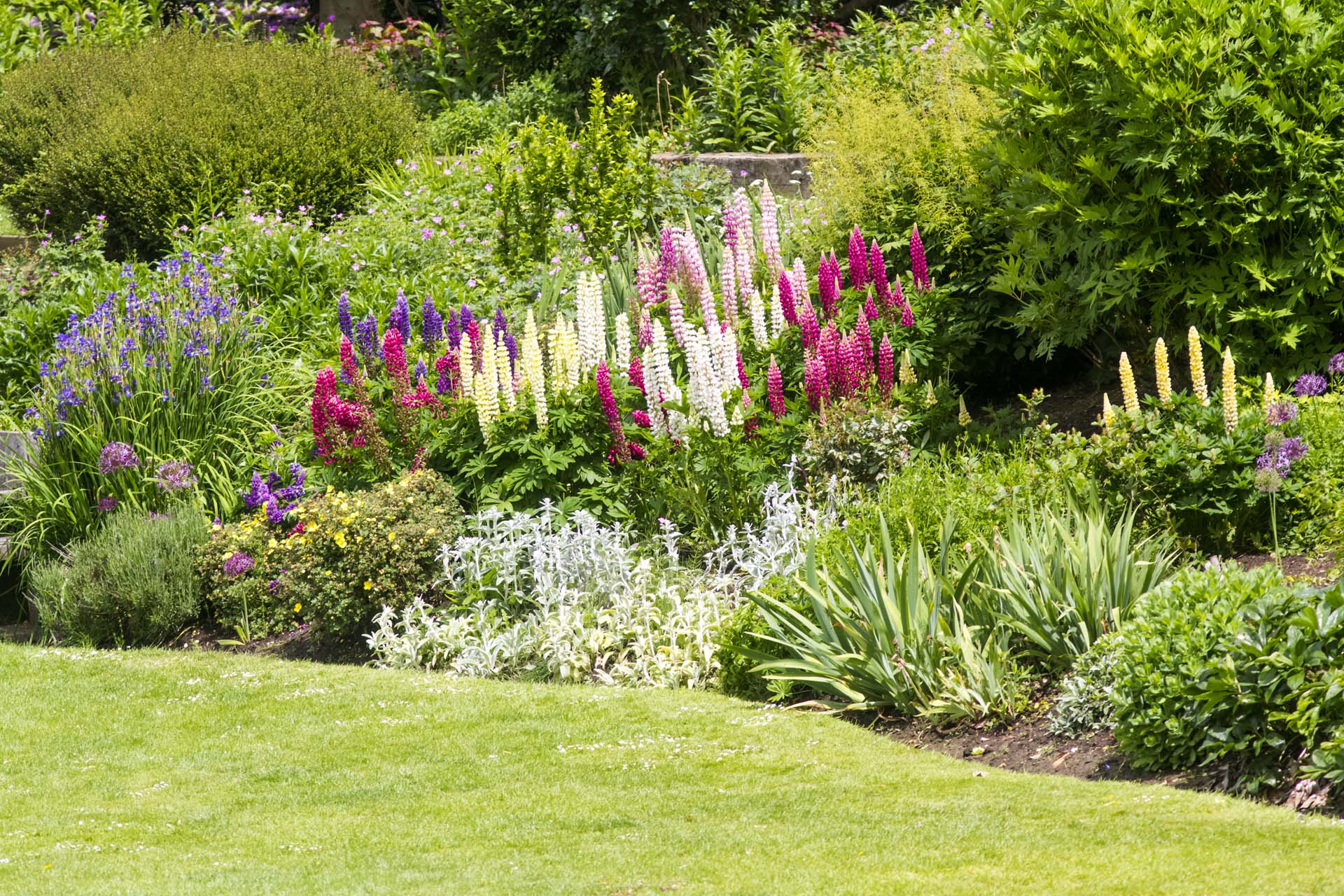
Create a beautiful border with minimum effort.
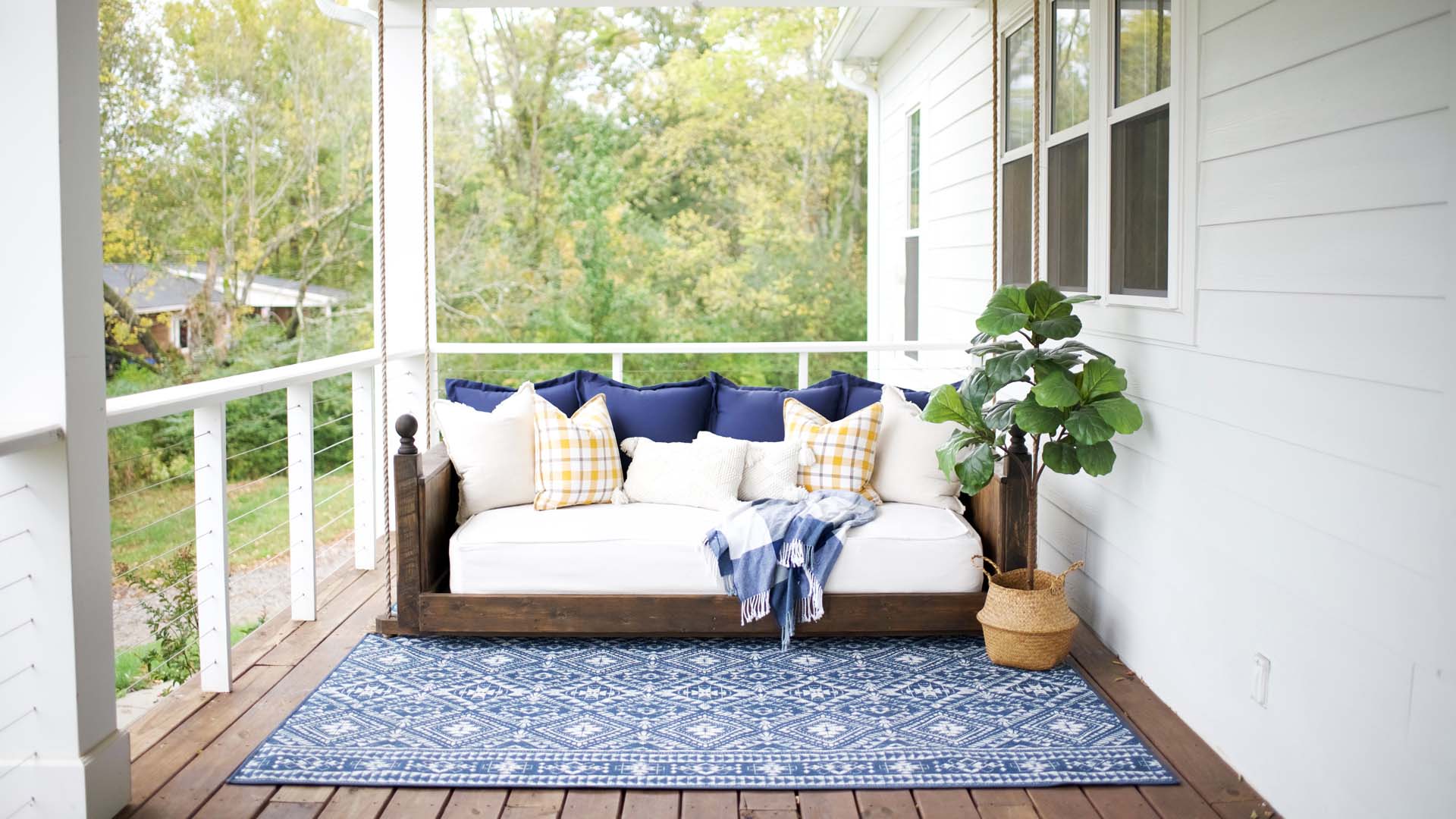

Try these clever ways with rocks, pebbles and boulders to transform your terrain.
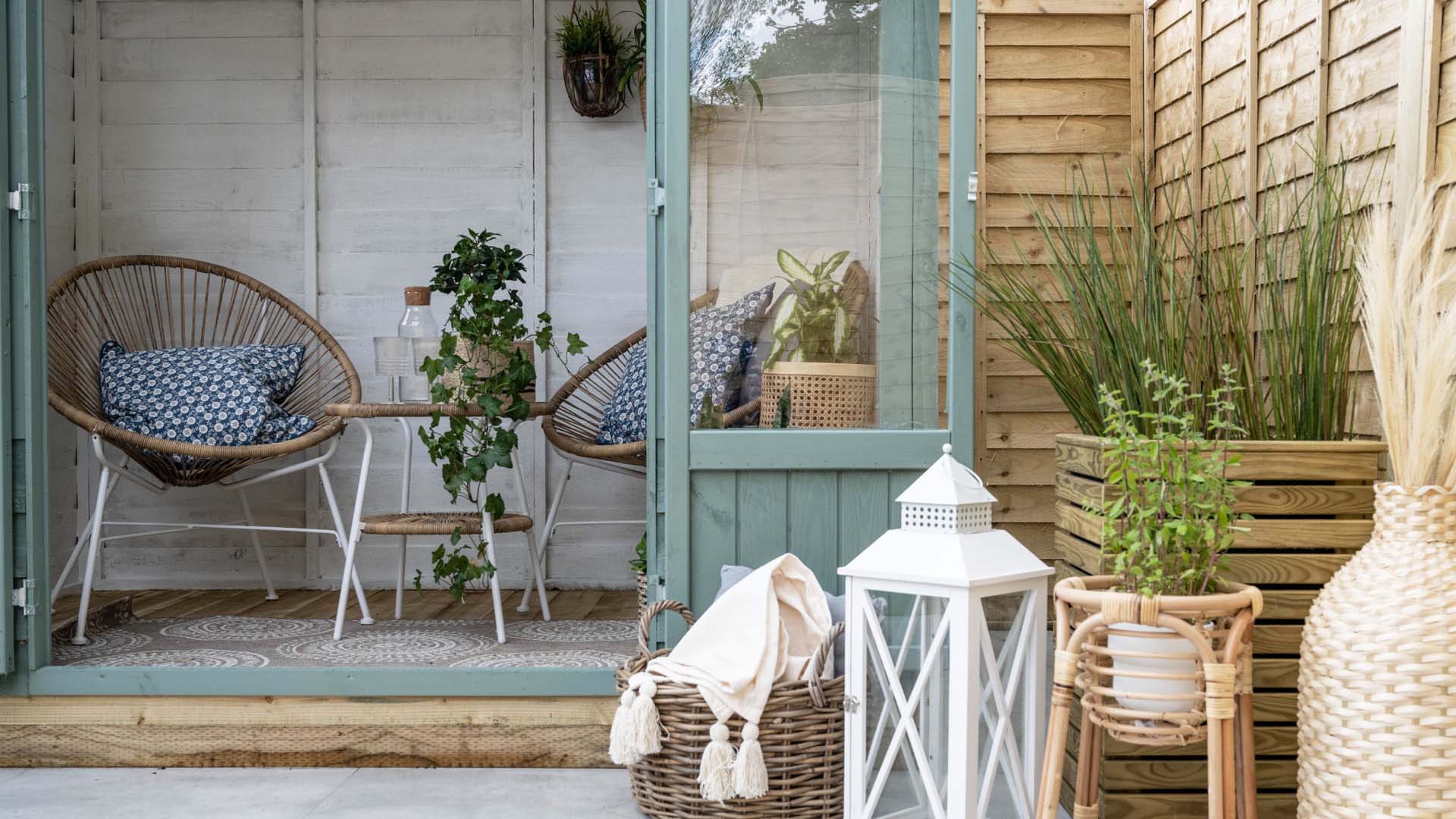
Discover how to make a small garden look bigger with our useful guide that’s crammed with easy tricks, from your choice of floor to the clever use of plants and accessories.

Our garden seating ideas and designs will help you make the best choice for your available outdoor space, with expert tips on keeping your purchases in top condition.
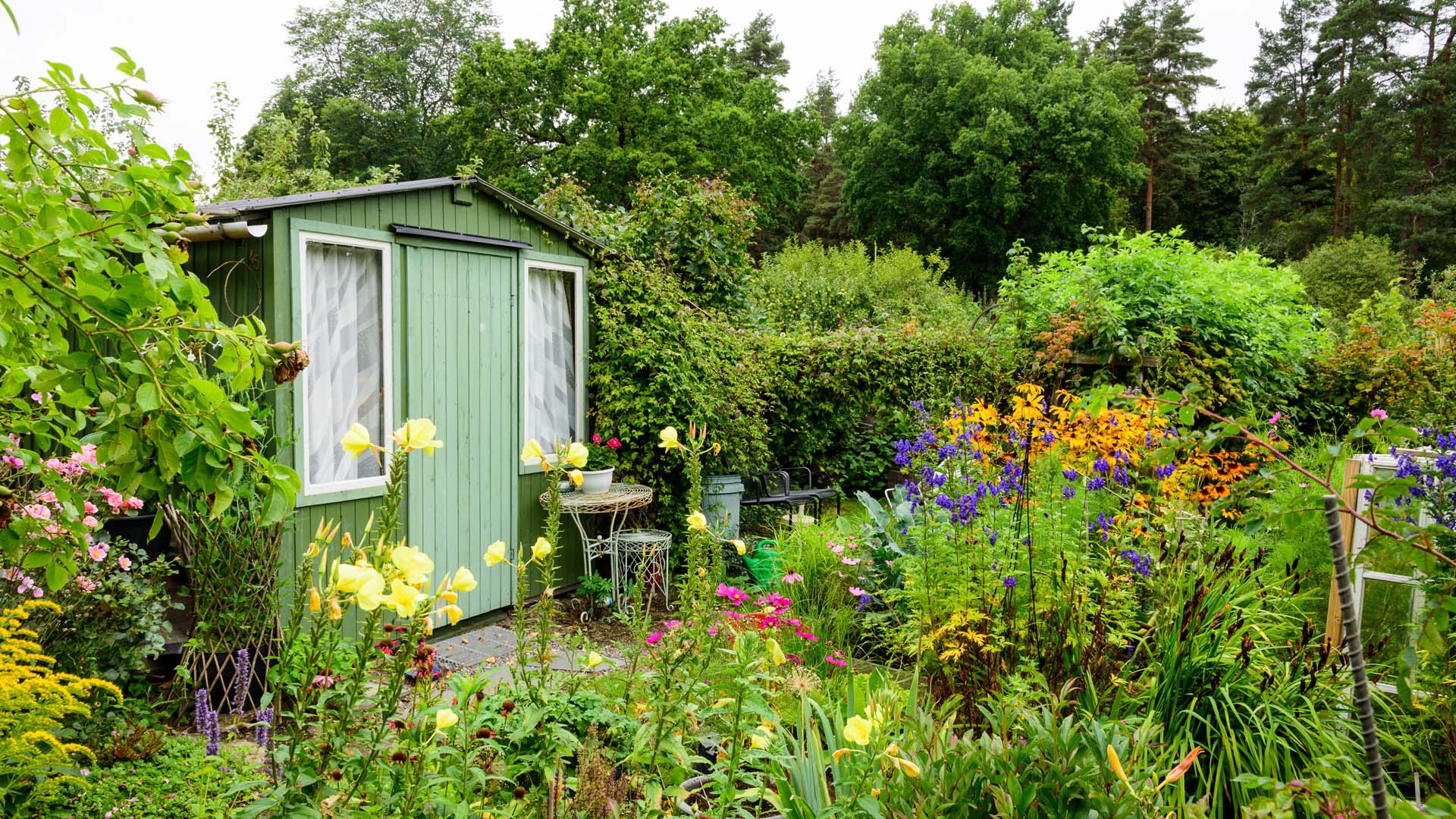
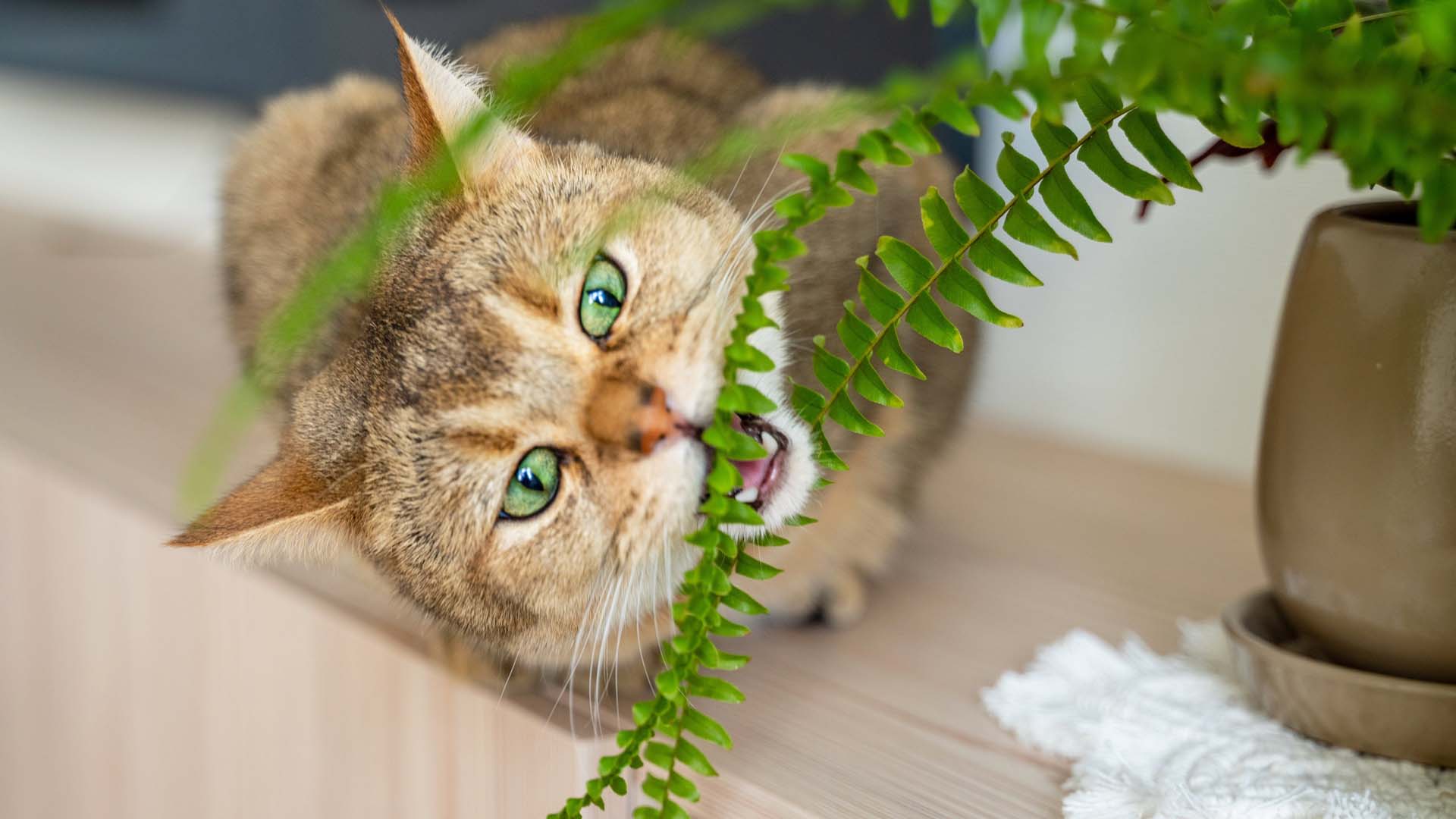
Pots at the ready – these safe houseplants for pets will help your house become tropical, not toxic.
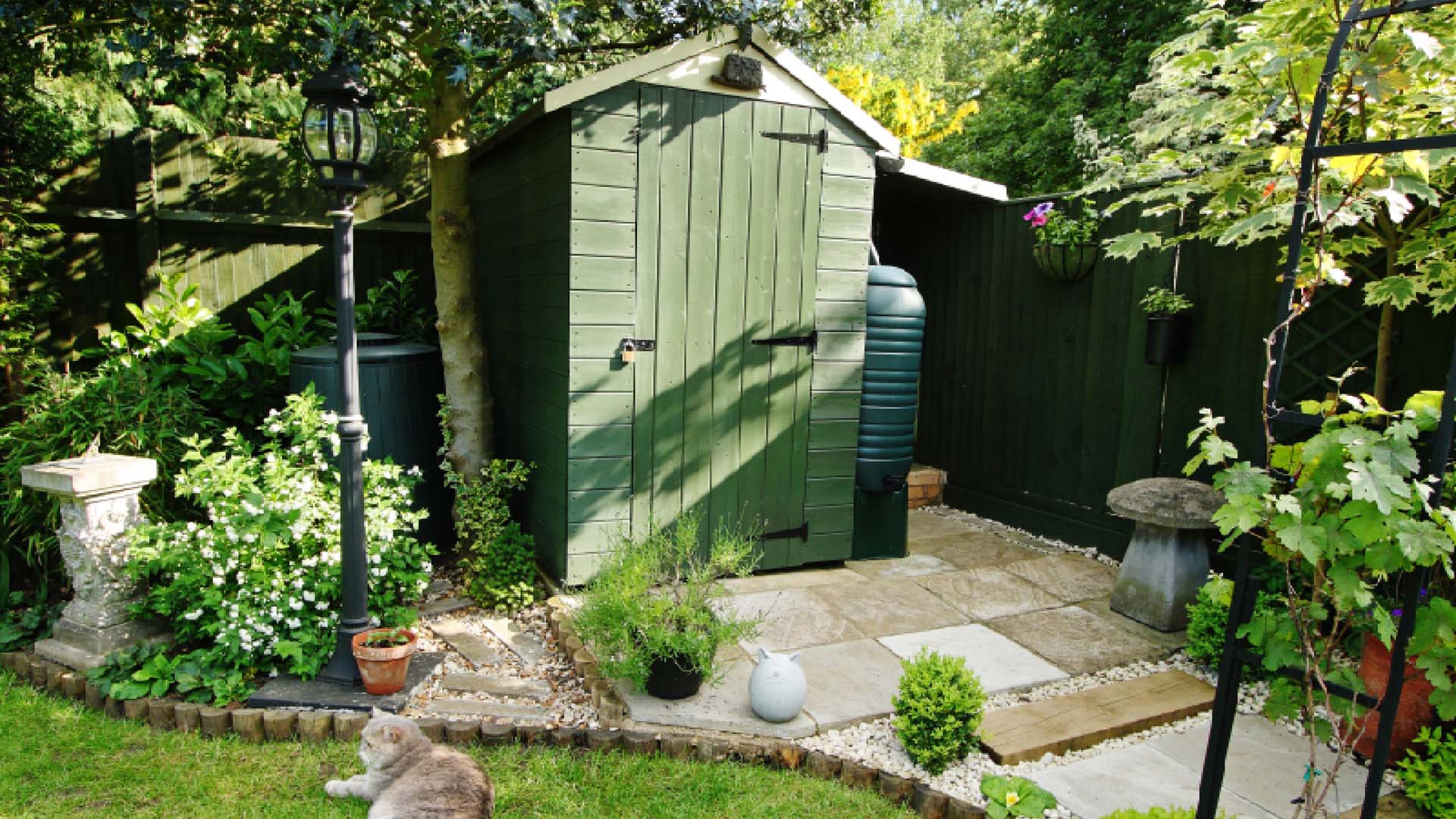
Size, height and where you put it are just some of the factors that will determine whether you’ll need planning permission for a shed.
